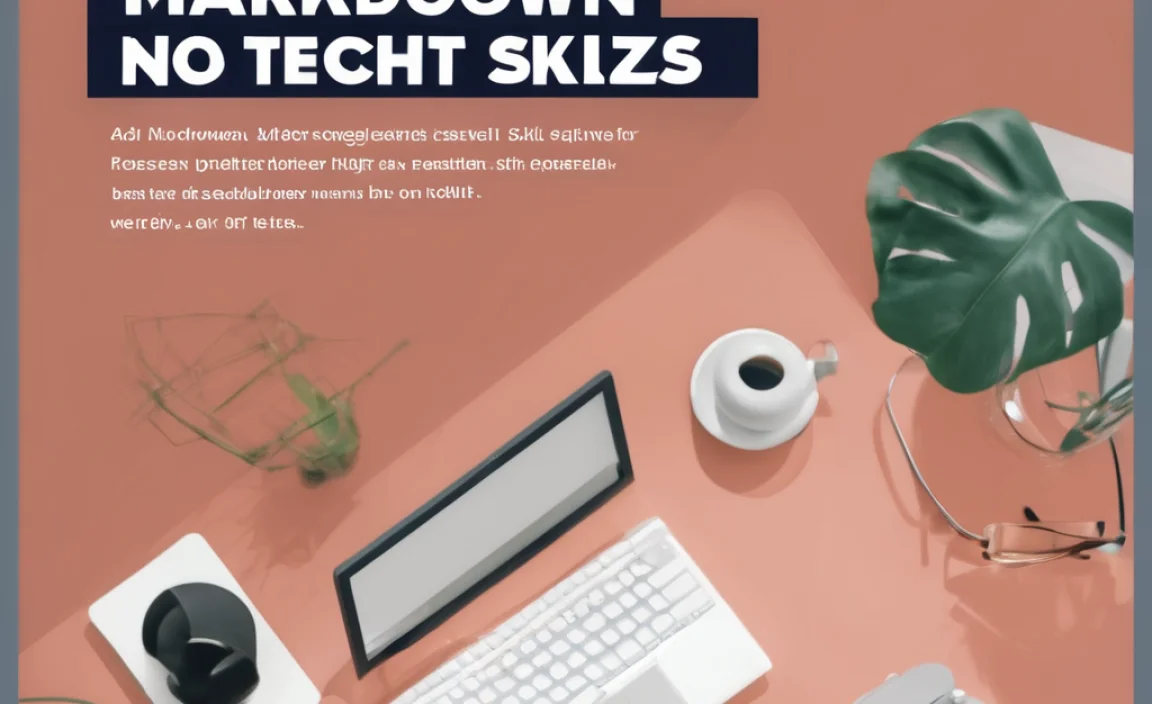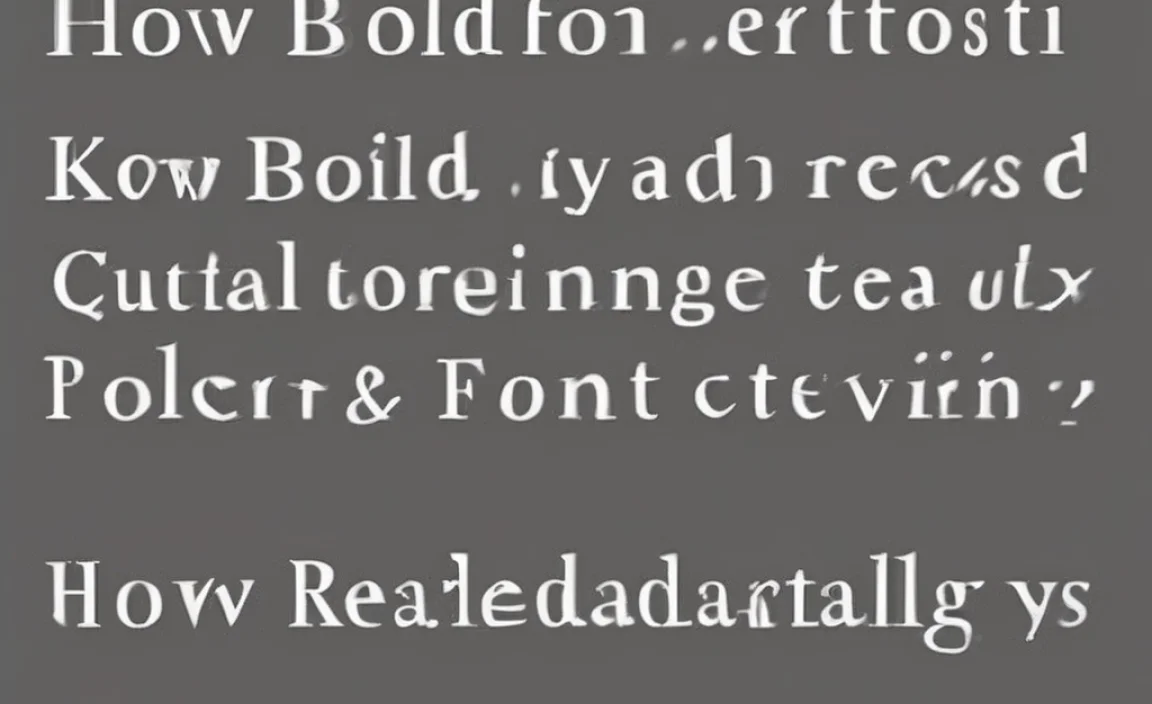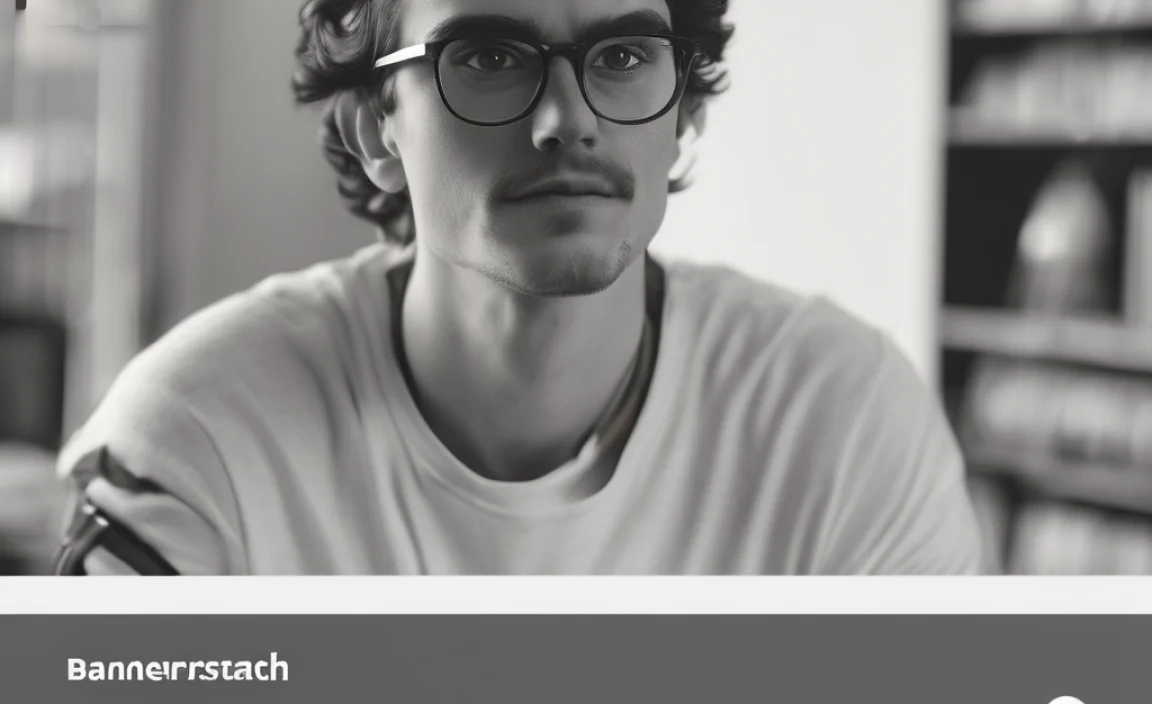The “Shark Tank Font” refers to the distinctive, bold, and often sans-serif typeface used in the show’s iconic logo and branding. It’s a key element of the show’s energetic and professional visual identity, designed for immediate impact and memorability.
Ever wondered about that bold, unmistakable font used on the Shark Tank logo? It’s a question many design enthusiasts, business owners, and even aspiring entrepreneurs find themselves asking. The visual language of a brand, especially one as impactful as Shark Tank, is crucial. When you see that font, you instantly think of innovation, deals, and high stakes. It feels clean, modern, and strong, doesn’t it? This isn’t accidental; it’s smart design. Many struggle to pinpoint exactly what makes a font so effective, leading to frustration when choosing typefaces for their own projects. Don’t worry! We’re going to break down the genius behind the “Shark Tank font” and explore why fonts like it are so essential for making a powerful design statement.
Unpacking the “Shark Tank Font” Phenomenon
The “Shark Tank font” isn’t just a single typeface; it’s more of a style and a feeling that the show’s branding evokes. While the specific fonts used have evolved slightly over the show’s long run, the core characteristics remain consistent. They are typically bold, sans-serif fonts that convey confidence, clarity, and a sense of modern professionalism. Think about it: when you’re trying to reel in investors or capture the attention of millions, the words on screen need to be instantly readable and impactful. This is where the strategic use of typography shines.
What Makes the Shark Tank Branding So Effective?
The visual identity of Shark Tank is carefully curated to reflect the show’s core elements:
- Authority and Seriousness: The strong, often uppercase lettering communicates a sense of gravitas and importance.
- Modernity and Innovation: Sans-serif fonts, in particular, feel contemporary and forward-thinking, aligning with the innovative businesses pitched on the show.
- Readability and Clarity: In a fast-paced show, viewers need to absorb information quickly. The chosen fonts ensure titles, names, and key figures are easily digestible.
- Memorability: A striking font becomes part of the brand’s visual DNA, making it instantly recognizable.
The “Shark Tank font” is essential because it’s a cornerstone of the show’s brand recognition. It’s a visual cue that immediately tells you what you’re watching and sets the tone for the content. For designers and business owners, understanding these principles can help you select typefaces that communicate your own brand’s message effectively.
Common Typeface Styles Associated with “Shark Tank”
When people refer to the “Shark Tank font,” they are often thinking about a few key design characteristics that are prevalent in the show’s graphical elements. These usually fall into the realm of display fonts or strong sans-serifs designed for maximum impact.
Bold Sans-Serifs: The Show’s Backbone
Sans-serif fonts are characterized by their lack of serifs – those small decorative strokes found at the end of letterforms in serif fonts. Sans-serifs tend to look cleaner, more modern, and can be incredibly legible, especially at larger sizes or on screens. The Shark Tank branding frequently utilizes bold weights of sans-serif fonts to convey strength and establishment.
Some popular sans-serif font families that share similarities with the Shark Tank aesthetic include:
- Gotham: Known for its geometric forms and balanced proportions, Gotham (developed by Hoefler & Co.) is a quintessential modern sans-serif that exudes confidence and clarity. Its straightforward, approachable yet authoritative feel makes it a favorite for branding.
- Proxima Nova: This typeface blends geometric and grotesque styles, offering a sleek, highly readable, and versatile option. It’s a go-to for many designers seeking a contemporary sans-serif with a friendly edge.
- Montserrat: A popular open-source font, Montserrat draws inspiration from the signage of the Montserrat neighborhood in Buenos Aires. It features a geometric structure and a friendly, open feel, making it great for headlines and branding.
Display Fonts for Impact
While sans-serifs form the show’s core identity, display fonts are often used for specific titles or visual elements where a unique or more dramatic look is desired. These fonts are typically designed for headlines and are less concerned with body text readability. They can be more stylized, condensed, or have unique character shapes.
The key is that these display fonts still maintain a sense of professionalism and impact, mirroring the show’s overall brand. They don’t lean towards overly decorative or script-like styles that might detract from the serious business nature of the pitches.
| Characteristic | Description | Design Implication |
|---|---|---|
| Bold Weight | Thick, substantial strokes in letters. | Conveys strength, authority, and importance. |
| Sans-Serif Style | No decorative strokes (serifs) on letter edges. | Appears modern, clean, and highly readable, especially on screens. |
| Geometric/Clean Forms | Letter shapes often based on simple geometric figures (circles, squares). | Suggests precision, order, and a no-nonsense approach. |
| Uppercase Emphasis | Frequent use of all capital letters for titles and logos. | Creates a strong, impactful visual presence and a sense of finality or decree. |
| High Contrast (Limited) | While not extremely high contrast, individual letterforms are often well-defined. | Ensures clarity and prevents letters from blending together. |
Why Is a Strong Font Choice So “Genius” in Branding?
The term “genius” in design often refers to solutions that are simple, effective, and solve a problem elegantly. The “Shark Tank font” achieves this by:
- Creating Instant Recognition: Like McDonald’s Golden Arches or Coca-Cola’s script, the Shark Tank logo (and the font it uses) is instantly identifiable. This visual shorthand is incredibly powerful for brand recall.
- Setting the Tone: The font immediately communicates the show’s genre and atmosphere – business, finance, entrepreneurship, and high-stakes negotiation.
- Enhancing Readability: On a show where viewers are presented with business pitches, names, and figures, clear typography is essential for comprehension. A font that’s hard to read would actively hinder the viewer’s experience.
- Projecting Professionalism: A well-chosen, strong font signals that the brand is serious, credible, and well-established.
For businesses, a similar approach can be taken. Choosing a font isn’t just about aesthetics; it’s about selecting a visual voice that speaks to your audience and reinforces your brand message. A font can make a startup feel established, a creative agency feel innovative, or a service provider feel trustworthy.
Finding Your Own “Shark Tank” Style Font
You don’t need to use the exact font from the Shark Tank logo to capture its essence. The goal is to understand the principles and apply them to your own design needs. Here’s how you can find fonts that evoke a similar sense of strength, clarity, and professionalism:
Step 1: Define Your Brand’s Personality
Before you even look at fonts, ask yourself:
- What is the core message of my brand?
- Who is my target audience?
- What feeling do I want my brand to evoke (e.g., trustworthy, innovative, playful, luxurious)?
For example, if you’re launching a tech startup, you might want a font that feels modern and innovative. If you’re a financial advisor, a font that feels secure and trustworthy would be more appropriate.
Step 2: Explore Sans-Serif Families
As we’ve seen, bold sans-serifs are a great starting point for achieving that Shark Tank-esque impact. Look for fonts with distinct letterforms, good spacing (kerning), and a variety of weights (light, regular, bold, black).
Consider exploring these popular and accessible sans-serif font resources:
- Google Fonts: A vast library of free, high-quality open-source fonts that can be easily integrated into websites. It’s an excellent place for beginners to start their search. You can filter by font classification (sans-serif), weight, and even styles.
- Adobe Fonts: If you have an Adobe Creative Cloud subscription, you have access to a curated collection of professional fonts available for desktop and web use.
- Font Squirrel: Offers a selection of free fonts for commercial use, often with a focus on high-quality, well-crafted options.
Step 3: Consider Display vs. Text Fonts
Think about where the font will be used. For your main logo, website headings, or key marketing materials, a font with more personality and impact (like a display sans-serif) is suitable. For body text on your website or in longer documents, you’ll need a more traditional, highly readable sans-serif or even a serif font.
Here’s a general rule of thumb:
- Headlines & Logos: Can be more decorative, bolder, and have unique character.
- Body Text: Needs to be clear, comfortable to read for extended periods, and often has simpler letterforms.
Using a font pairing (one for headlines, another for body text) can create visual hierarchy and add depth to your design. A common and effective pairing is a bold, standout sans-serif for headings and a clean, highly readable sans-serif for body copy.
Step 4: Test for Legibility and Versatility
Once you’ve narrowed down your choices, it’s crucial to test them:
- Test at Different Sizes: Does the font still look good and remain readable when shrunk down to a favicon or blown up on a billboard?
- Test on Different Backgrounds: How does it look in black on white, white on black, or over images?
- Test Key Characters: Ensure that important letters like ‘a’, ‘g’, ‘i’, and ‘l’ are distinct to avoid confusion.
The designers behind Shark Tank likely went through this rigorous testing process to ensure their chosen typography worked across all their on-screen and promotional materials.
Essential Font Resources for Beginners
Navigating the world of fonts can seem daunting, but there are fantastic resources available that simplify the process. Think of these as your go-to tools for finding the perfect typeface:
- Google Fonts: As mentioned, this is an unparalleled resource for free, web-safe fonts. Its explorer tool allows you to try out fonts with your own text and see them in various weights and styles. Visit Google Fonts to start exploring.
- Font Pair: This website is specifically designed to help you find font pairings. It showcases how different Google Fonts look together, providing excellent inspiration for combining headline and body fonts.
- Canva Font Combinations: If you use Canva for design, their platform often suggests font pairings and allows you to easily experiment with typography within your projects.
- Adobe Fonts (formerly Typekit): For those who need professional-grade fonts and have an Adobe subscription, this is an excellent resource for high-quality, curated typefaces.
Understanding the different font categories is also key:
| Category | Characteristics | Best Used For | Example Feel |
|---|---|---|---|
| Serif | Have small decorative strokes (serifs) at the ends of letterforms. | Traditional branding, books, body text for readability in print. | Classic, trustworthy, academic. |
| Sans-Serif | Lack serifs; clean, straight lines. | Modern branding, web design, headlines, signage. | Modern, clean, direct, efficient. |
| Script | Resemble handwriting or calligraphy. | Invitations, personal branding, logos needing an elegant touch. | Elegant, personal, artistic, formal or informal depending on style. |
| Display | Highly stylized, unique, and attention-grabbing. | Logos, headlines, posters, short impactful text; generally not for body text. | Bold, decorative, thematic, impactful. |
The “Shark Tank font” style predominantly falls into the bold sans-serif and display categories, aiming for strength and clarity.
The Impact of Fonts on User Experience
Beyond just looking good, the fonts you choose significantly impact how users interact with your content. This is often referred to as user experience (UX) design. A well-chosen font can:
- Improve Readability: As seen with Shark Tank, clear fonts make information easier to digest. If your website text is difficult to read, users will likely leave. According to Nielsen Norman Group, a leading authority on UX research, “Readability is the most important factor in choosing fonts for web and screen use.”
- Enhance Brand Perception: A professional font can make your business appear more credible and polished, while a poorly chosen one might suggest a lack of attention to detail.
- Guide User Attention: Typography helps create a visual hierarchy. Using different font weights, sizes, and styles, you can guide the reader’s eye to the most important information first.
- Evoke Emotion: Certain fonts can make users feel calm, excited, curious, or secure. This emotional connection is a powerful branding tool.
Think of the Shark Tank logo’s font – it’s designed to grab your attention immediately when you see it on screen. This is a prime example of a font choice that directly supports the show’s goals: to engage viewers and signal a dynamic, professional program.
Avoiding Common Typography Pitfalls
While aiming for a “Shark Tank font” style, it’s easy to fall into common traps. Here are a few to watch out for:
- Overusing Decorative Fonts: While exciting, too many decorative or script fonts can make your design look cluttered and unprofessional. Reserve them for specific accents.
- Font Conflicts: Using too many different fonts together (more than two or three) can confuse your audience and make your brand look disorganized.
- Ignoring Readability: The most stylish font in the world is useless if no one can read it. Always prioritize clarity, especially for essential information or body text.
- Not Considering the Medium: A font that looks great in print might not render well on a small mobile screen. Always test across different devices and contexts.
- Using Poor-Quality Fonts: Free fonts can be great, but some are poorly designed, with inconsistent spacing or letterforms. Stick to reputable sources like Google Fonts or Adobe Fonts for the best results.
The reason the “Shark Tank font” works so well is its balance. It’s impactful without being overly distracting, and it’s professional without being dull. Finding that balance is key to successful branding.
Frequently Asked Questions About the Shark Tank Font
Q1: What is the exact font used in the Shark Tank logo?
A1: While the exact font for the main logo has been closely guarded and may have seen slight variations or custom modifications over the years, it strongly resembles bold, geometric sans-serif fonts. Popular choices that capture a similar feel include Gotham, Proxima Nova, or similar high-impact sans-serifs. The emphasis is on thick strokes and clear, often all-caps, lettering.
Q2: Can I use a “Shark Tank style” font for my business?
A2: Absolutely! The principles behind the Shark Tank branding – strength, clarity, and modernity – are universally applicable. You can choose a bold sans-serif from reputable font libraries like Google Fonts to achieve a similar professional and impactful look for your own brand.
Q3: Is it important to use all caps for my brand name like Shark Tank?
A3: Using all caps can create a strong, commanding presence, much like Shark Tank. However, it’s not always necessary. Consider your brand’s personality. All caps work well for brands aiming for authority and boldness. Standard title case or lowercase might be better for brands that want to appear more approachable or elegant. Test what best fits your message.
Q4: Where can I find free fonts similar to the Shark Tank font?
A4: Google Fonts is an excellent resource for free, high-quality fonts. Search for “geometric sans-serif” or “bold sans-serif” and experiment with fonts like Montserrat, Lato (







